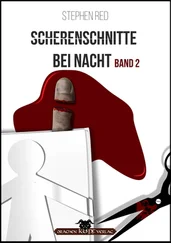Stephen Ambrose - Band of Brothers
Здесь есть возможность читать онлайн «Stephen Ambrose - Band of Brothers» весь текст электронной книги совершенно бесплатно (целиком полную версию без сокращений). В некоторых случаях можно слушать аудио, скачать через торрент в формате fb2 и присутствует краткое содержание. Жанр: История, на английском языке. Описание произведения, (предисловие) а так же отзывы посетителей доступны на портале библиотеки ЛибКат.
- Название:Band of Brothers
- Автор:
- Жанр:
- Год:неизвестен
- ISBN:нет данных
- Рейтинг книги:4 / 5. Голосов: 1
-
Избранное:Добавить в избранное
- Отзывы:
-
Ваша оценка:
- 80
- 1
- 2
- 3
- 4
- 5
Band of Brothers: краткое содержание, описание и аннотация
Предлагаем к чтению аннотацию, описание, краткое содержание или предисловие (зависит от того, что написал сам автор книги «Band of Brothers»). Если вы не нашли необходимую информацию о книге — напишите в комментариях, мы постараемся отыскать её.
Band of Brothers — читать онлайн бесплатно полную книгу (весь текст) целиком
Ниже представлен текст книги, разбитый по страницам. Система сохранения места последней прочитанной страницы, позволяет с удобством читать онлайн бесплатно книгу «Band of Brothers», без необходимости каждый раз заново искать на чём Вы остановились. Поставьте закладку, и сможете в любой момент перейти на страницу, на которой закончили чтение.
Интервал:
Закладка:
The jump was a huge success. The C-47s came roaring through the sky in a perfect V of Vs. Churchill and the generals were watching from a specially constructed grandstand. The troopers began leaping out of their planes, stick after stick, more than 1,000 men and parachutes filling the sky in a seemingly unending deluge. The instant they hit the ground the troopers were twisting out of their chutes and heading for the assembly area on a dead run, putting their weapons together without slackening speed. The visitors were amazed at the rapidity of the movement; as the regimental scrapbook put it, "the Boys from Currahee" had made a grand impression.
Later, the regiment assembled in front of the reviewing stand. Taylor invited Churchill and Eisenhower to inspect the ranks. They did, stopping occasionally to ask a question or two of one of the men.
Eisenhower stopped in front of Malarkey. "Soldier, where are you from?" (Eisenhower talked to thousands of enlisted men on such inspections before D-Day; invariably his first question was "Where are you from?")
"Astoria, Oregon" Malarkey answered. "What did you do before the war?" Malarkey said he was a student at the University of Oregon. Ike wanted to know who won last fall's Oregon-Oregon State football game, and whether Malarkey intended to return to college after the war. Then he turned to Churchill and suggested that the Prime Minister might have a question.
"Well, son, how do you like England?" Malarkey assured him that he liked it very much, as he had always enjoyed English literature and history. Churchill promised to get him back to the States as soon as possible. "It was," said Malarkey, "a very memorable occasion."
Even larger maneuvers were held immediately after the Churchill jump, with the purpose of dovetailing the paratroopers, glider-borne units, and ground forces with the air forces and naval elements. Exercises were held throughout southwest England, with mass air drops and amphibious operations.
On one maneuver, Guarnere told Pvts. Warren Muck and Malarkey to drop a mortar shell on a 6-foot-square white target situated on a dune about 600 yards to their front. Malarkey fired once, too long. A second time, too short.
At that moment, some staff officers came up, accompanied by General Taylor. One of the staff officers told Guarnere to have his mortar squad fire at the target as a demonstration for the general.
Guarnere told Malarkey and Muck to fire three rounds. In rapid succession, they dropped three rounds down the barrel. Boom, the first hit the target dead center. Boom, boom, the other two came down on top of the destroyed target.
"Sergeant, is your squad always that accurate?" Taylor asked. "Yes, sir," Guarnere replied, "my boys never miss." The 101st took trains back to barracks in Wiltshire and Berkshire. General Taylor and his staff were well aware that there were many kinks to work out. The Boys from Currahee had learned their lessons about small unit tactics well; now it was up to the generals to fit them properly into the larger whole.
4 "LOOK OUT HITLER! HERE WE COME!"
*
SLAPTON SANDS, UPPOTTERY
April 1-June 5,1944
The 101st Airborne, the 82nd Airborne, and the 4th Infantry Division made up the VII Corps. The VII Corps and V Corps (1 stInfantry and 29th Infantry Divisions) made up the U.S. First Army, Gen. Omar Bradley commanding. Eisenhower had given Bradley the task of establishing a beachhead on each side of the mouth of the Douve River, where the French coast makes a right angle; running to the east is the Calvados coast, running to the north is the base of the Cotentin Peninsula. The V Corps was to take the Calvados coast (code name for the target area, "Omaha Beach"), while the VII Corps was to take the base of the Cotentin (code name, "Utah Beach"). The VII Corps at Utah would be on the extreme right flank of the invasion area, which stretched from the mouth of the Orne River on the left (east) some 65 to 70 kilometers to the Cotentin.
Eisenhower needed to provide sufficient width to the invasion to bring in enough infantry divisions in the first wave to overpower the enemy, dug in behind Hitler's "Atlantic Wall." (1) In one way, Utah was the easiest of the five assault beaches. At the British and Canadian beaches ("Sword," "Juno," and "Gold," east of Omaha) the numerous vacation homes, small shops, and hotels and casinos that lined the coast provided the Germans
1 . "Hitler made only one big mistake when he built his Atlantic Wall," the paratroopers liked to say. "He forgot to put a roof on it."
With excellent protection for machine-gun nests, while at Omaha a bluff rising from the beach to a height of 200-300 feet gave the German defenders, dug into a trench system on a World War I scale, the ability to shoot down on troops coming out of the landing craft. But Utah had neither bluff nor houses. There were some fixed defenses, made of reinforced concrete, containing artillery and machine-guns. The biggest was at La Madeleine, in the middle of Utah (the fortification took its name from a nearby religious shrine that dated back to Viking days). But the gradual slope and low sand dunes at Utah meant that getting across and beyond the beach was not going to be as difficult as at Omaha.
The problem at Utah was what lay inland. Behind the sand dunes was low ground, used by the Norman farmers for grazing cattle. Four narrow, unimproved roads ran inland from the beach; these roads were raised a meter or so above the ground. Field Marshal Erwin Rommel, the German commander, had flooded the fields, with the idea of forcing any troops and armor coming inland to use the roads ("causeways," Eisenhower's planners called them). Rommel had most of his artillery in camouflaged positions or reinforced casements and bunkers back from the flooded area, where it could bombard the roads; Rommel had his infantry prepared to take up defensive positions along the western end of the roads, where it could repel any troops moving up them.
The task Eisenhower gave the 101st was to seize these causeway exits. The method to be used was a night drop. The aim was to disrupt the Germans, create surprise and havoc, and get control of those exits and destroy the big guns before the Germans could react.
It would be an intricate, tricky, and risky operation. To have any chance of success, it would be necessary to practice. For the practice to be realistic, it would be necessary to find a piece of the English coastline similar to Utah Beach.
Slapton Sands, in Devonshire, in southwestern England, was similar to Utah. A long narrow stretch of beach was separated from dry ground by a shallow lake and adjoining swamp. Two bridges crossed from the shoreline to high ground. And so it was that the VII Corps carried out its rehearsals for the part it was to play on D-Day at Slapton Sands.
At the end of April, the entire VII Corps participated in Exercise Tiger. E Company rode in trucks to a resort hotel on the seashore at Torquay, where it spent a comfortable night. The next day, April 26, it was back into the trucks for a ride to an area back from Slapton Sands from which all civilians had been evacuated. The company slept in the field until midnight, when trucks brought the men forward to a simulated drop zone. After assembly, the company marched overland through a mist to an elevated point a mile back from the beach and set up a defensive position, guarding the bridge.
At dawn, Webster wrote, "We could see a vast fleet of amphibious craft moving slowly in to land. I've never seen so many ships together at one time; an invasion fleet is the most impressive sight in the world." What he had not seen was the disaster of the previous evening. German torpedo boats had slipped in among the LSTs and other big assault craft carrying the 4th Infantry. The Germans sank two LSTs and damaged others; more than 900 men drowned. The incident was covered up by the Allies for fear that it would hurt morale among the troops scheduled to go to France in LSTs (it remained covered up for more than forty years, evidently out of embarrassment).
Читать дальшеИнтервал:
Закладка:
Похожие книги на «Band of Brothers»
Представляем Вашему вниманию похожие книги на «Band of Brothers» списком для выбора. Мы отобрали схожую по названию и смыслу литературу в надежде предоставить читателям больше вариантов отыскать новые, интересные, ещё непрочитанные произведения.
Обсуждение, отзывы о книге «Band of Brothers» и просто собственные мнения читателей. Оставьте ваши комментарии, напишите, что Вы думаете о произведении, его смысле или главных героях. Укажите что конкретно понравилось, а что нет, и почему Вы так считаете.



![Stephen Ambrose - Citizen Soldiers [Condensed]](/books/346737/stephen-ambrose-citizen-soldiers-condensed-thumb.webp)
![Stephan Orth - Behind Putin's Curtain - Friendships and Misadventures Inside Russia [aka Couchsurfing in Russia]](/books/415210/stephan-orth-behind-putin-s-curtain-friendships-a-thumb.webp)





